Wild sheep sorrel and dried Slippery Jack mushrooms go great with spicy homegrown chili peppers! Come see how!
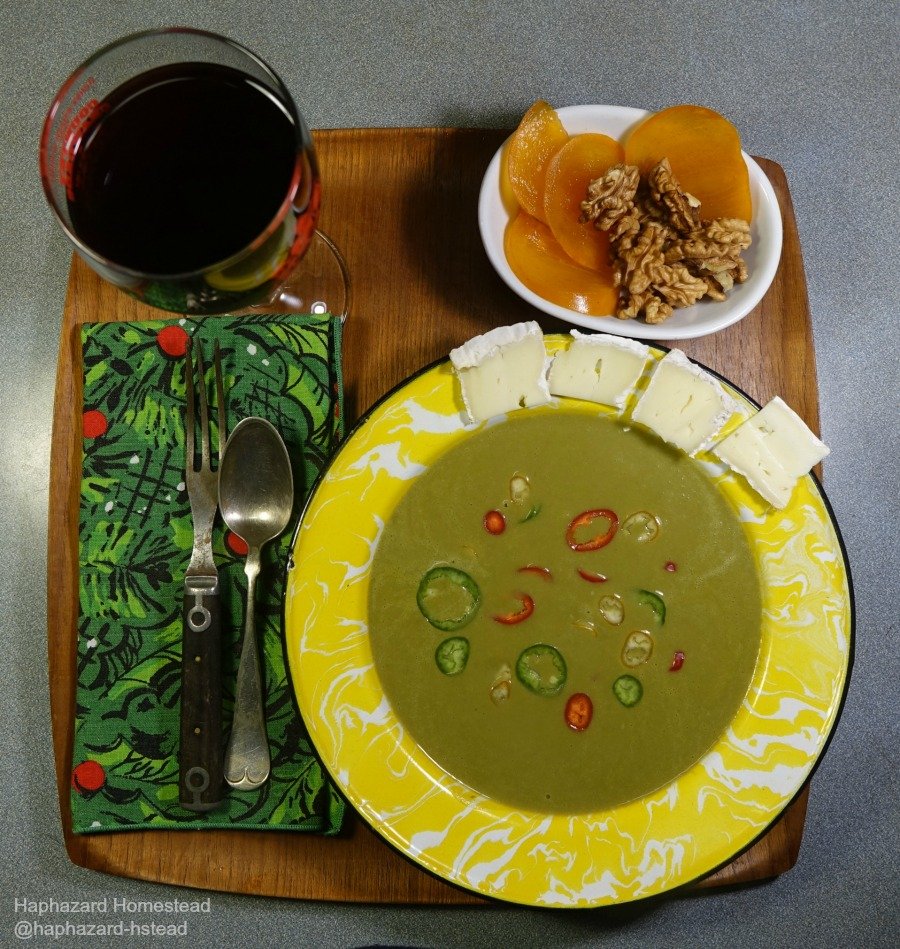
When I saw the description for Culinary Challenge 5, I wasn't sure what I would make. I am not a fan of super-hot peppers. But I usually grow a few spicy ones. This year, I had Anaheim and Hungarian Hot Wax peppers. And I still have a few slowly ripening after their last harvest at the end of October. I wanted to make a recipe that could use a wide range of peppers, from mild to super hot.
I wasn't sure what to make. Until I was walking around my yard and noticed a new patch of wild sheep sorrel. Then I knew exactly what I wanted to make. A wild Sheep Sorrel Soup, topped with sliced peppers. The sour flavor of the sheep sorrel goes great with heat from fresh peppers. And one recipe fits any heat preference, just by letting people choose which peppers to put on top of their soup -- as long as folks know which peppers are hot and which are not!
Step 1. Pick and and clean the sheep sorrel
I just noticed the Sheep Sorrel (Rumex acetosella) this week, coming up through some fallen maple leaves. I haven't seen it in my yard for a couple years. They must have gotten a start with our fall rains and now are spreading by their ground-level runners.
I like the sour, lemon taste of sheep sorrel leaves and the thin stalks. They both are tender and tasty. They will be good until the ground freezes. They will perk right up in early spring, too, and last until early summer.
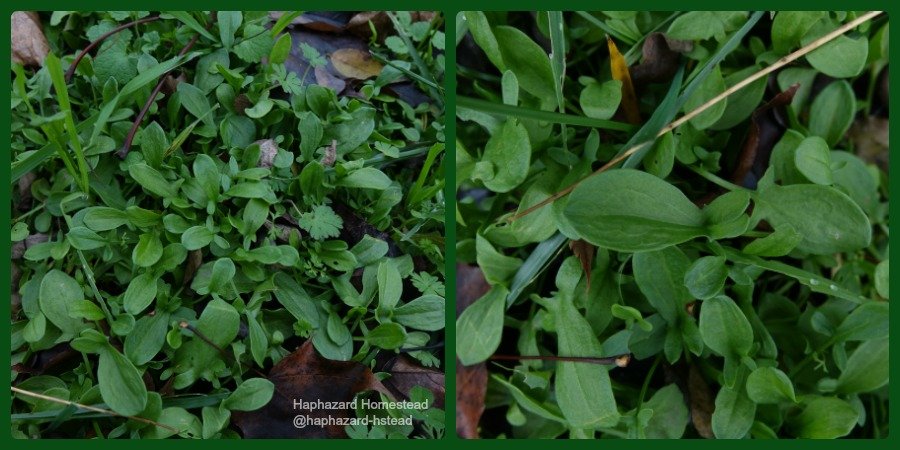
I'm glad to see the little plants return, even though it is considered a troublesome invasive weed. According to the US Department of Agriculture's Plants Database, sheep sorrel is classified as a noxious weed in 46 out of the 50 states. So there's no need to worry about picking too much from one area.
I brought about 4 cups of leaves back to my kitchen. When I'm outdoors, I pick clean. So in the kitchen, it's easier to make sure that I don't have other plants I don't want. And I can pick out any poor quality leaves. On the left, you can see the distinctive shape of the little sheep sorrel leaves. Because they are small plants and we've had a lot of rain, these leaves can be dirty. So I rinsed them really well!
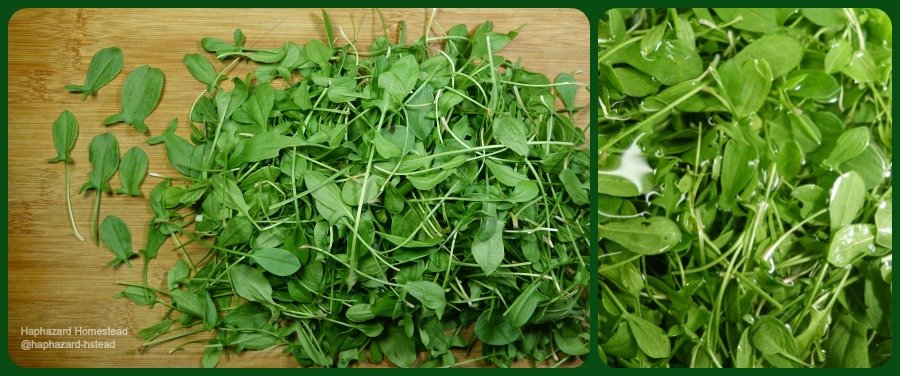
Step 2. Prep the garden produce and dried wild mushrooms
While I was outdoors, I dug up a bulb of a garden escape artist that has spread into many places in my yard - Elephant garlic. It's milder than other garlic, more like a leek. I cut up the last of my homegrown Akane apples from their early September harvest. And I added 2 small fingerling potatoes that grew as volunteers near my compost pile. The apple sweetens the sour taste of the sheep sorrel. And the potatoes thicken the soup just enough.
I also thinly sliced my assorted homegrown peppers. The yellow one is a Hungarian Hot Wax. I think it's hot - but it's in the range of a Jalapeno. Not a Ghost Pepper like @papa-pepper grows or the Scotch Bonnets that @rebeccaryan uses. The red one is the very last Anaheim I have left - a small one. They have a mild spiciness when they are red and fully mature. The green one is some bull-nose green pepper that isn't hot or spicy at all. But they are all 'chilis'.
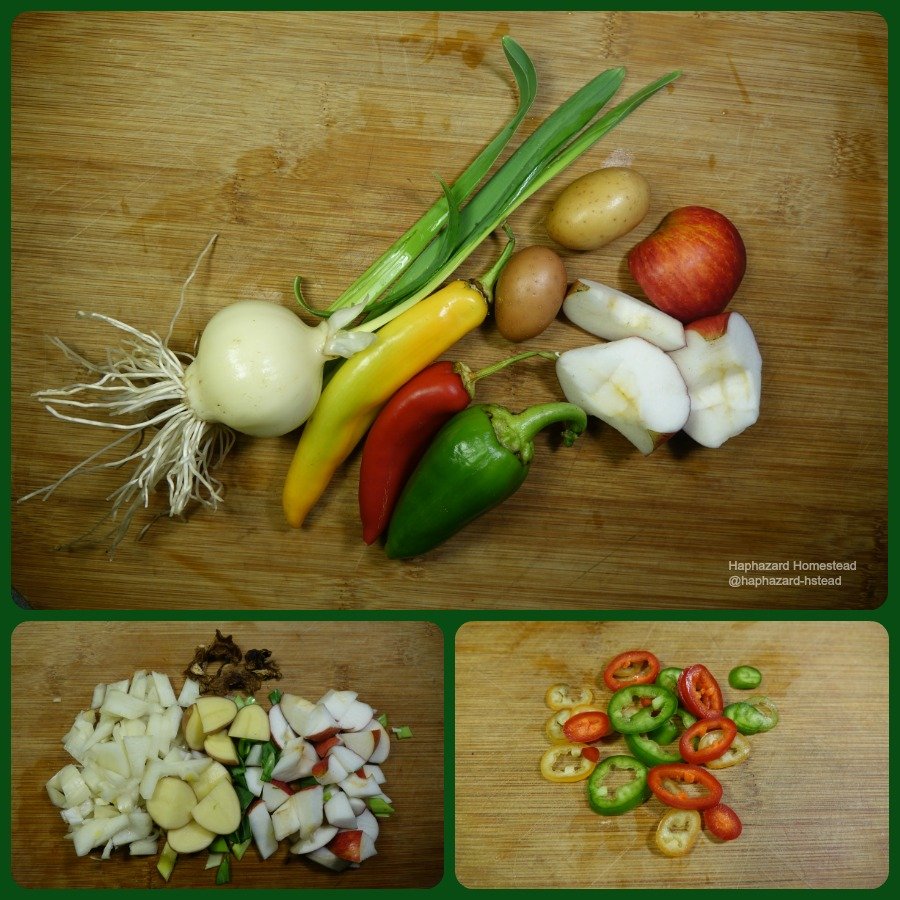
The preparation is easy - I just chop everything up. I mix in a few dried Slippery Jack mushrooms (Suillus luteus). They are the same mushrooms that I use in Culinary Challenge 2 to make my Slippery Jack Sandwich. The picture below shows the mushooms and my jars of dried ones. I'll make a post about foraging and preserving Slippery Jacks pretty soon. Any mushrooms would work for this soup, though. They add a depth of flavor, so I don't need any chicken broth or vegetable broth.
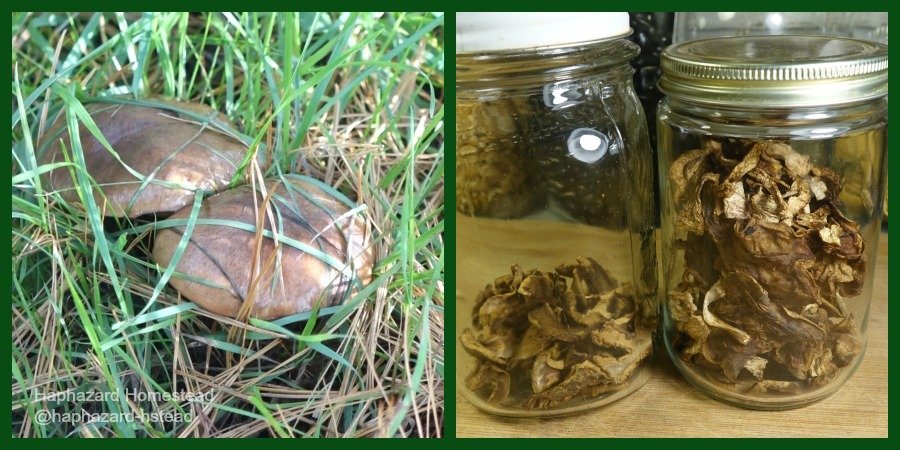
Step 3. Cook the soup
The cooking is easy. Saute everything except the sheep sorrel in olive oil. When the garlic is cooked through, cover it all with water. And bring it all to a boil.
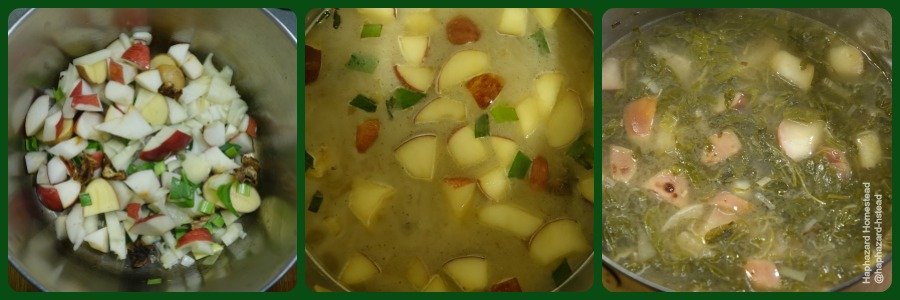
Then add all the sheep sorrel. It cooks down fast. You can see how the sheep sorrel changes from a bright green to an unappetizing drab olive green. That's why it's good to make this into a creamy soup - it's a lot prettier. Let it boil until the potato and apple pieces are soft. Then put it in a blender. Blend on the highest setting until it's smooth. That's it! Easy!
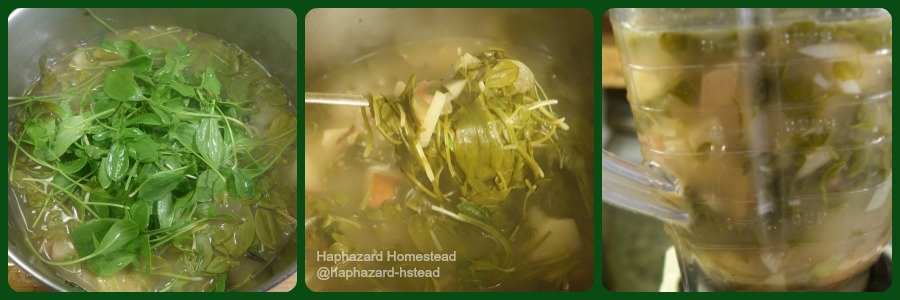
Step 4. Eat up!
Now pour the soup into a bowl and top it with the pepper slices. I put Brie cheese around the rim of the bowl -- the cheese doesn't float in the soup. But a nice way to eat this soup is to put the Brie cheese in the soup and let it get soft. The cheese offsets the heat of the peppers very nicely. And dairy products tie up the oxalic acid in the sheep sorrel, so it's not a concern.
Served with a nice Paso Robles wine, slices of homegrown Japanese persimmon, and homegrown English walnuts - this was a great dinner tonight. I wouldn't have made this without the culinary challenge, so thanks @meesterboom and @englishtchrivy for choosing the theme this week! And thanks, homestead, for taking care of me with such good food - weeds, mushrooms, and garden produce!
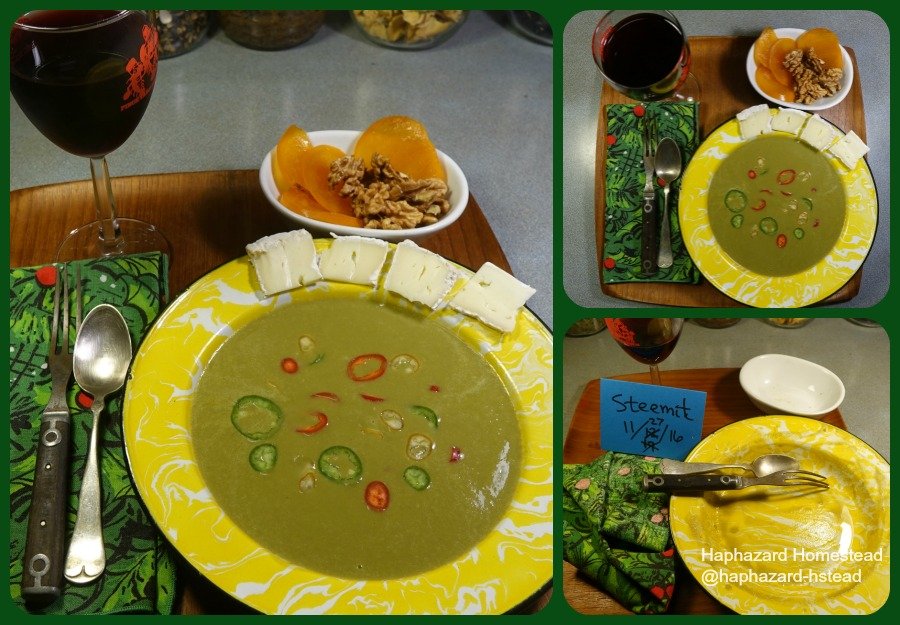
This made two bowls of soup and I ate both of them! It was that good. I hope someday each of you get to eat sheep sorrel soup - with whatever level of chili pepper heat you like!
Ingredient List: Sheep sorrel, Slippery Jack mushrooms, elephant garlic bulb and young leaves, apple, fingerling potatoes, assorted fresh chili peppers, Brie cheese. As usual, I got so involved in my soup, I forgot to put my Steemit note beside it. But at least I remembered when I was done. (So I have put my name of each image, like the rules require.)
What Do You Think?
Do you ever use Sheep Sorrel? How about French Sorrel from the garden? Do you ever use Slippery Jack mushrooms? How about other wild mushrooms? Would you try this soup if I served it to you? I want to hear from you!
I write about foraging because I believe that we can all have lives that are richer, more secure, more grounded, and more interesting by getting to know the plants and the land around us – in our yards, our parks, and our wilderness.
I would like Steemit to be the premier site for Foraging on the Internet! If you have any thoughts about foraging, or experiences to share, write a post and be sure to use the Foraging tag. And check out the @foraging-trail to see curated quality posts about foraging. Happy Foraging!
** Haphazard Homestead **
*** foraging, gardening, nature, simple living close to the land ***
All content is 100% Haphazard Homestead - photos and all!
I participate in Operation Translation. All my posts are available for translation under the rules listed on the linked post from @papa-pepper. Logo provided by @oepc85. Post goes 100% to Steem Power! Logo provided by @merej99

*** foraging, gardening, nature, simple living close to the land ***

